Thronebreaker: The Witcher Tales is like the Netflix Original spin-off of The Witcher 3. It’s slower, focused on characters you don’t really care about, probably about five hours too long, but at the end you’re still like “Yeah, okay, that wasn’t bad. Surprisingly good, even.”
Pour yourself a cup of something and settle in, because there’s 20 or more hours of card battling ahead of you.
Deal me in
Do you remember Gwent, the collectible card game CD Projekt built into The Witcher 3? Because that’s where the long and winding road that brought us Thronebreaker starts out. Gwent in The Witcher 3 was pretty bare-bones, pretty exploitable and unbalanced, but people played it for hours and hours in digital taverns. As far as open-world side activities go, it was one of the best.
So good, in fact, that CD Projekt decided to spin Gwent out into a standalone game. Multiplayer was obvious—it’s a collectible card game—and that half went into beta almost two years ago, with the unwieldy title Gwent: The Witcher Card Game.
But CD Projekt also teased a singleplayer campaign built around Gwent, a project that eventually became Thronebreaker.
It’s a spin-off of a spin-off, but I’m much more interested in Thronebreakerconceptually than I am Gwent proper. I’m not a huge fan of card games, not a big Hearthstone player and not really looking forward to Valve’s upcoming Artifact. Using those mechanics in a multiplayer context isn’t very interesting to me.
Wrap a story around them though, and you might hold my attention—especially a story as well-written as this. In Thronebreaker you play as Queen Meve, ruler of Lyria and Rivia. Meve’s realm is under threat from The Witcher’s perennial baddies, the Nilfgaardian Empire, forcing her to meet them on the battlefield to defend her realm.
Battles are Gwent matches though. That’s essentially the hook. And not just battles against Nilfgaard, but any fights—bandits, ghosts and ghouls, trolls, and so on. The realm is represented as a hand-drawn map, and Meve stands in for her entire army. You direct her around in a mostly linear fashion, coming across story events every 20 or 30 seconds.
Some of these are small and immediately rectified, like a merchant trying to sell you a rare card piece. Others are given a sort of Choose Your Own Adventure treatment, paragraphs of fully-voiced text laying out a scene and then forcing Meve to make a decision.
In typical Witcher fashion, these choices are hellish. Every time you make a decision, a Telltale-style note pops up in the bottom-left corner: “You’ve chosen one evil in favor of another.” It doesn’t matter which choice you make, it’s always the wrong choice, and that notification always appears.
Early on for instance you’ll attend a wedding with a surprise ending: The bride is kidnapped by bandits and hustled away. The town beseeches you, pleasego find her and save her. Meve totters off with her army, catching up with the bandits a little ways east and engaging in battle (via Gwent of course). This group of armed ruffians dead, you talk to the bride and...she doesn’t want to go back. She arranged the whole kidnapping to try and get out of a forced marriage. What do you do? Do you send her back and pocket the much-needed reward, or do you let her leave?
And that’s a fairly low-stakes choice. Others get even more morally gray. Later you’re trying to court support from a foreign king to fend off Nilfgaard’s advances, but you find out some of your soldiers have been de facto stealing from him. Do you pardon the soldiers, who you desperately need for the war? Even if it means risking this king’s anger, or outright losing his support?
There is no good decision, just the decision you make.
Your choices feed back into the card game as well. The soldiers you have access to, including named characters, vary over the course of the game depending on Meve’s actions. Black Rayla, a towering warrior who lets you draw any card from your deck and play it, is also a central character with a hatred for Scoi’atel, the non-human rebels in The Witcher’s world. Kill off any Scoi’atel you find and she’ll stay happy. Refuse, and she might leave your army and thus leave your deck, robbing you of that power.
Not that it matters much. If Thronebreaker has one failing, it’s that Gwent is incredibly easy—at least, the singleplayer version. It’s even easier in Thronebreaker than it was in The Witcher 3. Instead of the old three-rows-per-side, there are now only two rows. Ostensibly these are for “Melee” and “Ranged” characters, but in practice you can play any card on any row.
Standard, three-round battles are the weakest part of the game. You draw new cards after every round now, and have a 10-card maximum in your hand. Thus the old Witcher 3 strategy of “Make your opponent waste their good cards on the first round, then throw it” no longer works. Instead you just battle all the way through the first round until your opponent passes, where you’ll usually have a sizable lead, and then you both draw back up for the second round anyway.
It’s pointless. The better option, and Thronebreaker opts for this in most cases, is a “Shortened Battle” lasting only a single round. You get your 10 cards, then you play your moves until you run out. It flows better, though it’s still pretty easy to win. Thronebreaker is full of overpowered card combinations. Remember Black Rayla and her “Draw and card from your deck” power? There’s another character, Xavier, that lets you give someone else two charges—allowing Black Rayla to draw three cards from your deck at will. Then you can use the Decoy card to put Xavier back in your hand, play him again, and give Rayla two more charges .
That means when all is said and done, Black Rayla will have played an extra five cards from your deck, any cards you choose. It’s a completely busted combination, and I won most battles in Thronebreaker by over 100 points. A particularly egregious battle, I won 323 to 0.
It doesn’t matter much. This is, after all, a singleplayer game. There’s no real need for combat to be balanced. But it does make the game drag on a bit, especially the standard three-round battles. You find a tactic, then you exploit it over and over and over. Card games are fun (at least for me) when devising a strategy, not when you know exactly what cards you’ll play on which turn before the match even starts.
And so the best part of Thronebreaker is the “Puzzles.” There are a couple dozen of these throughout the game, and they change Gwent’s rules to match each situation. You have a custom hand, usually a custom win condition, and a limited number of turns.
The setups here are fantastic. One has you competing in a drinking game against a dwarf, trying to build up how many gulps of beer you can take each turn. Another starts with your soldiers having a snowball fight, when a troll joins in and starts throwing boulders.
Solving the puzzle then entails playing your cards in the correct order, manipulating Gwent’s rules to avoid certain pitfalls. That snowball puzzle, for instance, the troll targets whichever row has the most characters on it. Protecting Meve from harm thus entails using another card’s ability, which when played allows you to move three characters to the opposite row, drawing the troll’s attention.
They’re clever puzzles and satisfying to solve, forcing you to think about the ways various cards work together. That’s a central part of every card game and of every Gwent battle of course, but rarely are those mechanics given the same sort of focus as Thronebreaker’s puzzles. They’re the runaway highlight of an otherwise fairly simple card game.
Not that simple’s bad. I enjoyed mindlessly making my way through Meve’s world, especially in light of the story’s strengths. I don’t want to spoil too much about late-game events, but the story develops some real emotional weight early on, and Thronebreaker ends up providing an interesting window into a world that, until now at least, has been dominated by Geralt’s outsider worldview. It’s no Witcher 3, but it’s a decent little side story, interrupted every now and then by some lightweight card battles.
Bottom line
It’s a surprisingly good combo, as I said. The pacing drags a bit in the middle, and I wish Gwent were a bit more complicated—even the three-row version from Witcher 3, with its melee/ranged/artillery card restrictions, felt like it had more depth. But it’s a card game with an actual story around it, and that’s tantalizing.
I’ve always loved the idea of something like Hearthstone or even, in the old days, Magic: The Gathering. I loved the small bits of flavor text, the window into this world where monsters constantly battled—but I always found my enthusiasm dwindling long-term. Thronebreaker is 20-odd hours of those mechanics tied to an extrinsic motivation, a story that does right by its world and its characters even if it never reaches the same emotional depths as The Witcher 3 proper.



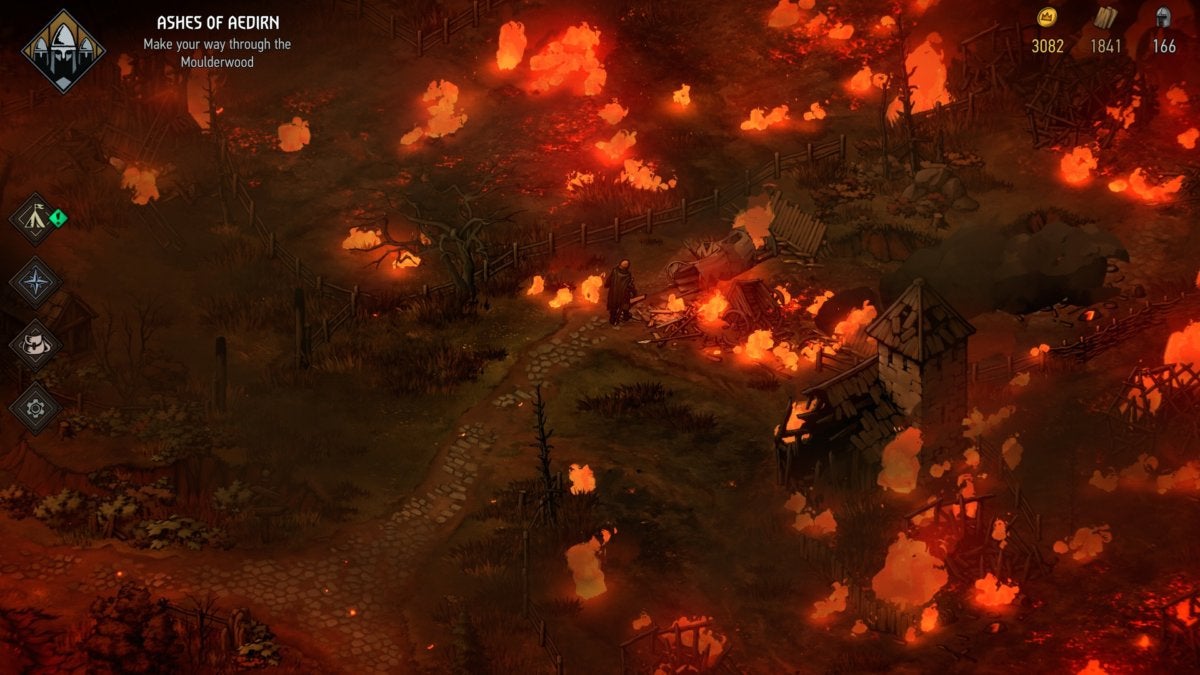
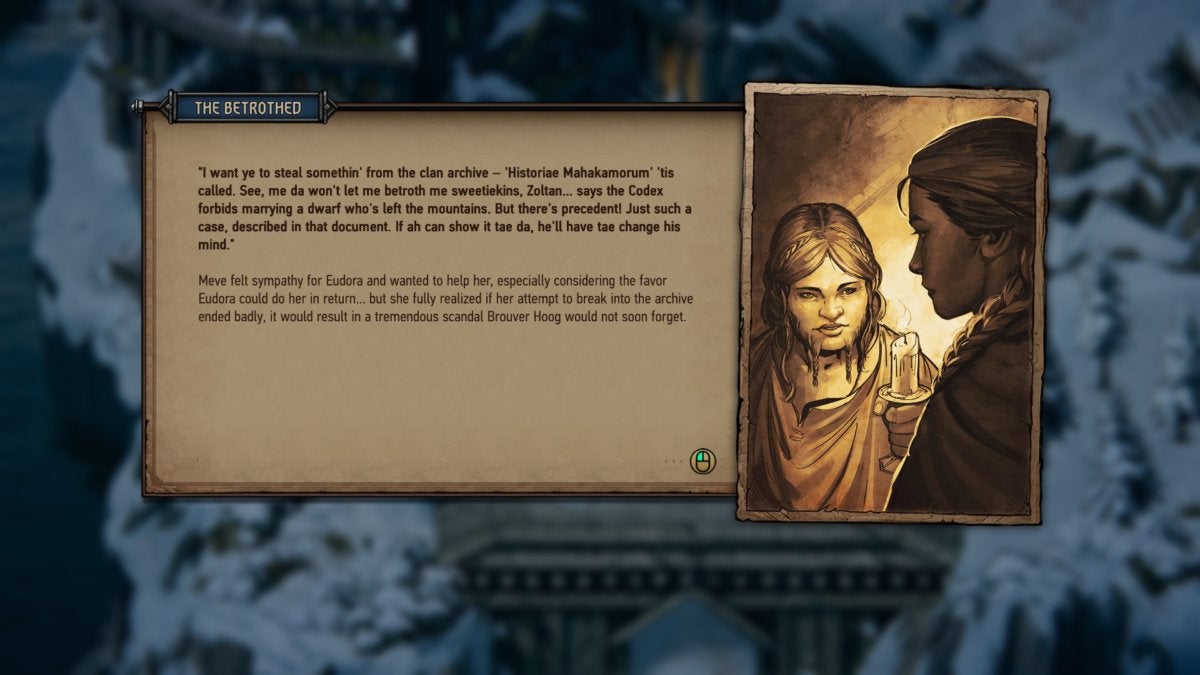
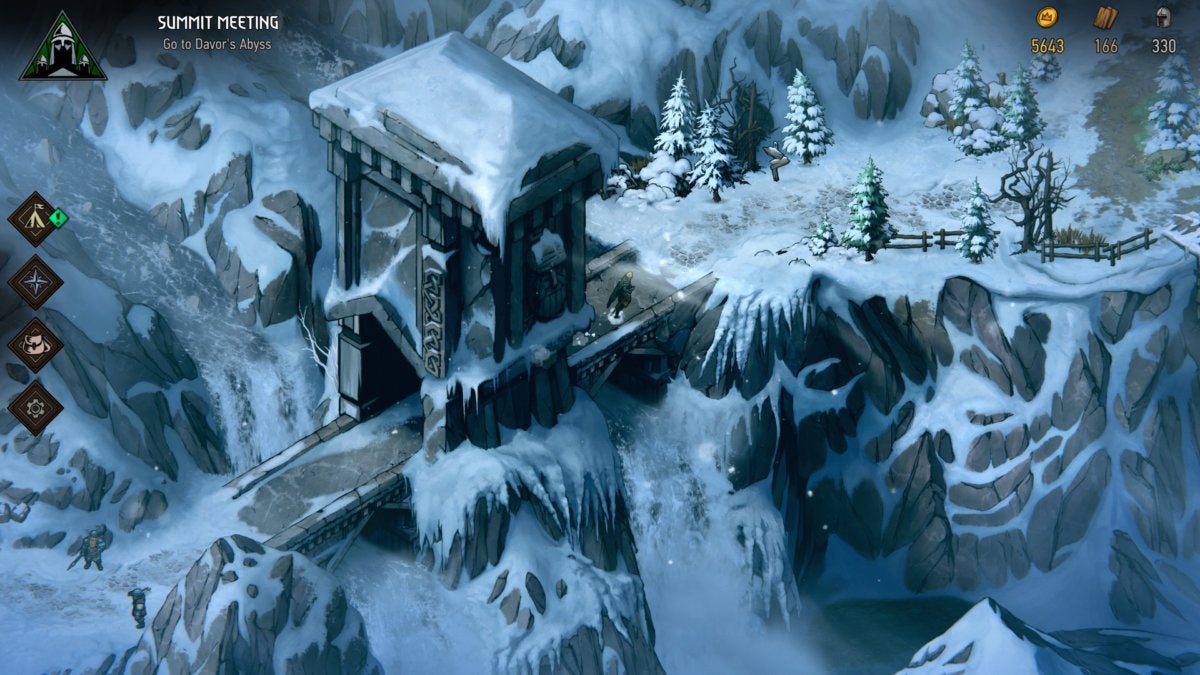
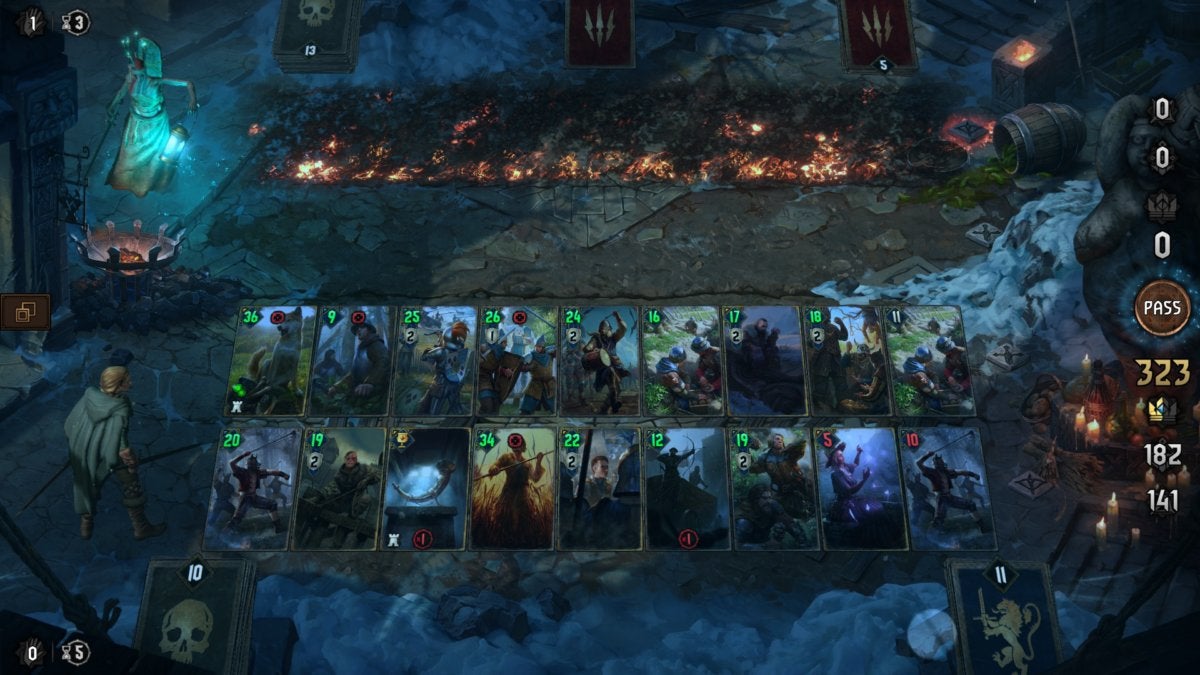
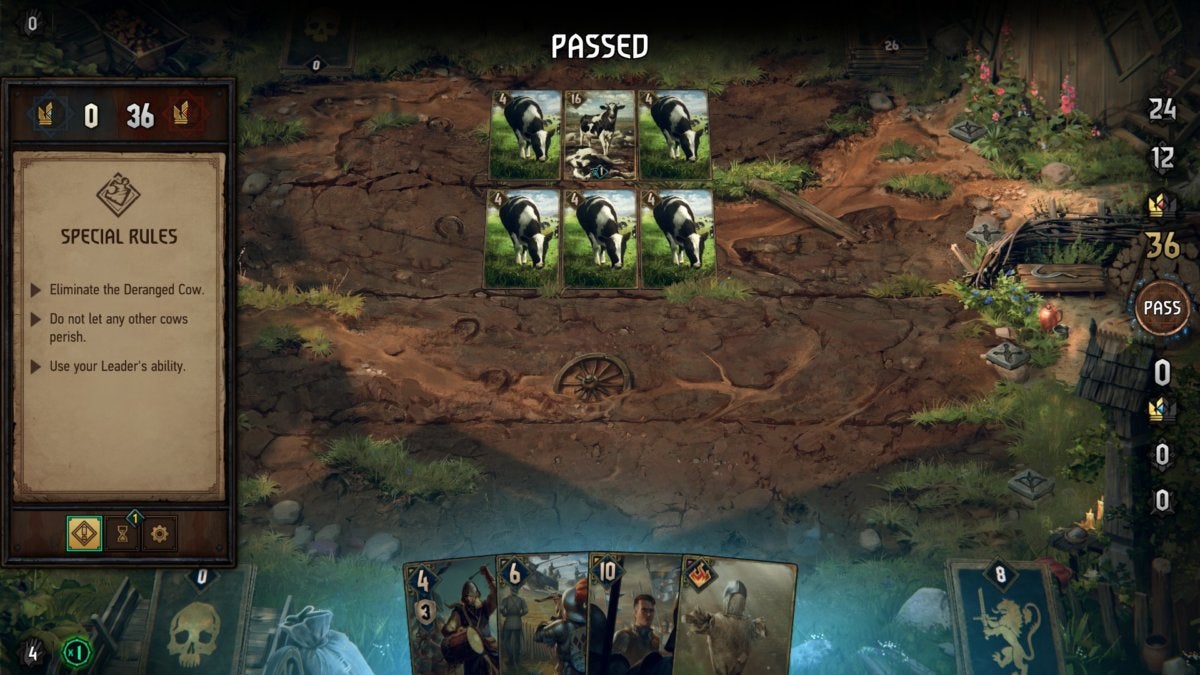







0 comments: